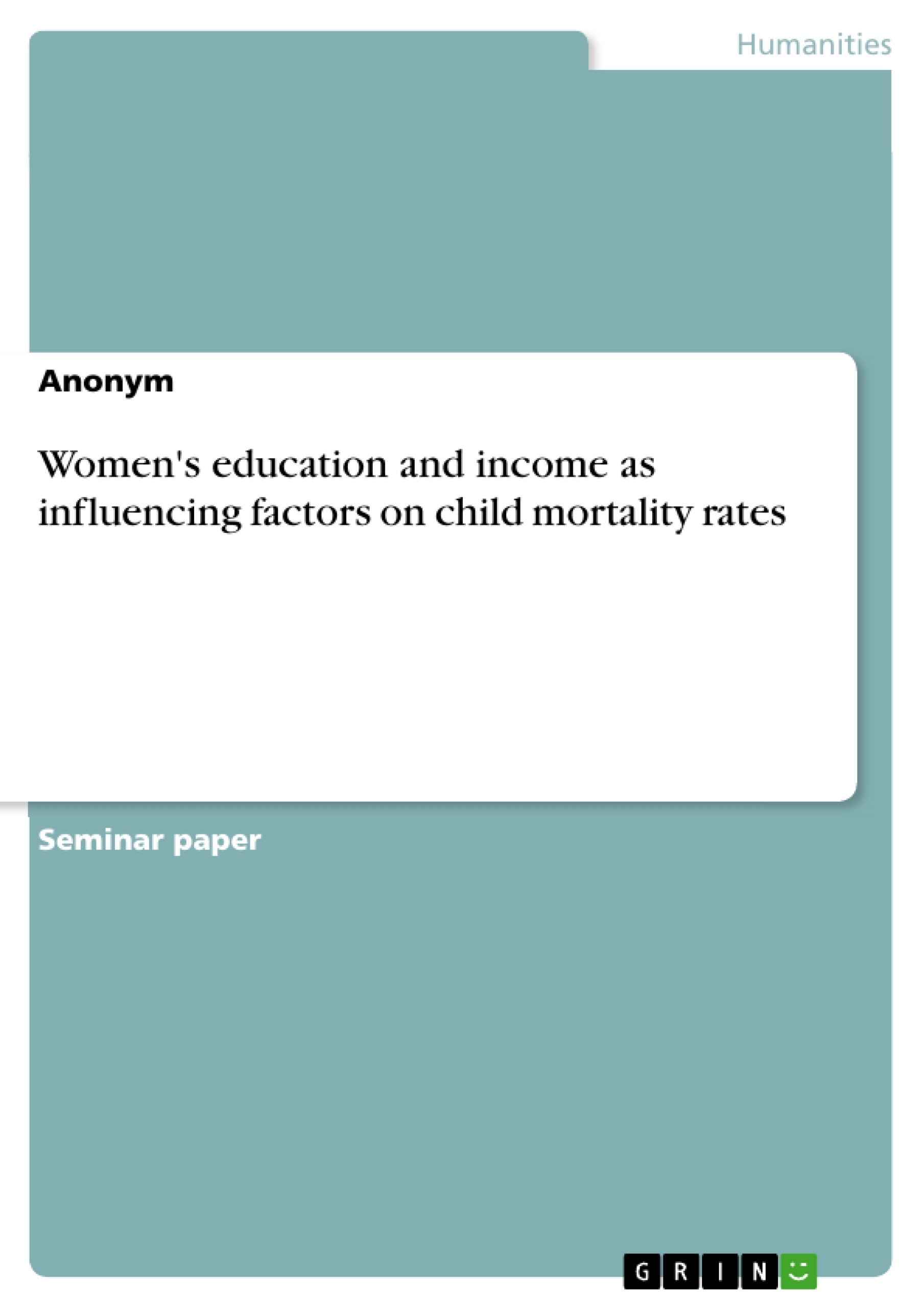The lives of children around the world are threatened many times in the early stages of their existence due to a variety of factors. Currently, many countries around the world still have very high child mortality rates. Child mortality and its causes are factors that directly affect and are affected by the general well-being of the population. The rate is considered a development indicator of the health status of countries around the world and also allows conclusions to be drawn about the quality of life of a given population. Child mortality rates, along with other health indicators, also represent an important value for assessing the development level of countries – it is not only a serious societal problem but also a sensitive indicator of social development. Reducing child mortality and ensuring the survival and improvement of child health is therefore a highly relevant global issue and is included in the sustainable development goals for 2030, among others.
Furthermore, the evaluation of reasons for child mortality is very important for the development of action strategies for improvement – among others in the field of public health. If correlations between different factors influencing mortality rates can be identified, measures to address them can be derived. Therefore, this research study aims to statistically investigate various factors influencing child mortality.
Inhaltsverzeichnis (Table of Contents)
- Introduction
- Child Survival and its Development
- Global Differences
- Influencing Factors
- Quantitative Research
- Data Set
- Descriptive Statistics
- Statistical Analysis
- Results
- Conclusion
Zielsetzung und Themenschwerpunkte (Objectives and Key Themes)
This research study aims to investigate statistically various factors influencing child mortality rates. The study focuses on understanding the global trends in child mortality and identifying factors influencing these rates. The research is anchored in the context of the Sustainable Development Goals, particularly the target of ending preventable deaths of children under five years of age by 2030.
- Global trends in child mortality
- Factors influencing child mortality rates
- The role of public health in reducing child mortality
- The impact of income on child survival
- The importance of achieving Sustainable Development Goals related to child health
Zusammenfassung der Kapitel (Chapter Summaries)
- Introduction: This chapter provides an overview of the research problem and its significance. It highlights the global burden of child mortality and its impact on societal development. The chapter also introduces the research question and outlines the study's objectives.
- Child Survival and its Development: This chapter discusses the global context of child survival, focusing on trends in under-five mortality rates and the progress made towards achieving the Sustainable Development Goals. It also explores the factors that influence child mortality rates and their impact on the well-being of populations.
- Quantitative Research: This chapter details the methodology used in the research study, including the data set, descriptive statistics, and statistical analysis methods employed. It describes the variables examined and the statistical techniques used to analyze them.
- Results: This chapter presents the findings of the statistical analysis, highlighting the relationships between various factors and child mortality rates. The results are presented and interpreted in relation to the research question and the broader context of child survival and development.
Schlüsselwörter (Keywords)
The primary focus of this research study is on child mortality rates and their influencing factors. The study utilizes quantitative research methods, including statistical analysis and data analysis. Key themes and concepts explored include global trends in child mortality, sustainable development goals, public health, income disparities, and the impact of these factors on child survival and development. The research aims to contribute to a better understanding of child mortality and identify potential interventions to improve child health outcomes.
- Citar trabajo
- Anonym (Autor), 2022, Women's education and income as influencing factors on child mortality rates, Múnich, GRIN Verlag, https://www.grin.com/document/1273963



